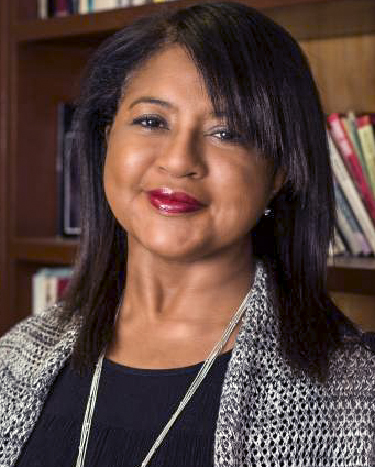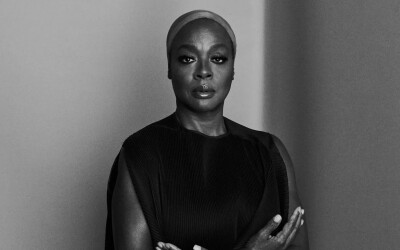Who Is Being Produced In American Theater?
Analyzing three years of data from productions in regional theaters in America, the study found that only 22% of these productions were written by women. The full Count study analyzes gender, race, nationality, genre and whether the productions were of new work or revivals. The Count was funded by the Dramatists Guild and The Lilly Awards, and its results were originally announced at the DG Conference in La Jolla in July 2015. The full study and various responses to its data were subsequently published in the November/December 2015 issue of The Dramatist. Our task from here on is to determine how best to change the way people make the choices that silence the voices of women. Sadly enough, this silencing is not limited to the theatre.
What we want is 50% of the airtime, 50% of the walls of the museum, 50% of the stage time in the theaters and on the movie screens. We want life in the arts to represent life as it is lived in the world. We want to hear the whole human chorus, not just the tenors, basses and baritones. I am challenging all of you to help us hear the voices of women in the world. That is the purpose of The Count. Not to establish quotas, not to shame and blame those people who continue to produce only the plays of men, but to assure that the voice of women will be heard in this land.
Velina Hasu Houston
According to the results of The Count study, people like me currently represent a mere 3.4% of produced playwrights in the U.S. But the good news is that I live in the Pacific region of this country, which, out of thirteen productions, produced 39% of plays by female writers between 2010 and 2014 (a larger sampling might reduce that percentage). Nationally during the same period, male writers’ works represented 78% of produced plays. According to the Center for American Progress, women are about 50.8% of the U.S. population, earn about 60% of all undergraduate and master’s degrees including about 40% of all business and management master’s degrees, and earn about 47% of law and medical degrees. They comprise 47% of the national labor force and “59% of the college-educated, entry-level workforce.” Despite these numbers, women trail behind men in leadership positions across most industries. It seems safe to deduce that this is so in the dramatic arts as well. The lag is even greater when one considers writers of color and especially female writers of color. In so many theatre settings, I have heard white artists state that artists of color have it so easy because they are in demand and white writers have nothing to offer racially, but the numbers are reflecting that talk of diversity is not playing out in the reality of what is being produced on U.S. stages. On the other hand, I have heard the diversity tête-àtête, but the solution has been to draw more whites into the arena (white females), thereby bypassing the need to integrate color. According to the Knowledge Center, people of color are about 39% of the U.S.
Velina Hasu Houston’s career began at Manhattan Theatre Club and expanded to notable theatres internationally including 21 commissions, three being filled currently at Pasadena Playhouse, Los Angeles Opera, and Playwrights’ Arena-Center Theatre Group. She is creator/director MFA in Dramatic Writing, USC School of Dramatic Arts.
Jonathan Reynolds
It depends on its interpretation and what happens next. The numbers are big, but as the desired outcome supported by this study was announced at a DG Council meeting well before the research was concluded, they’re hardly a surprise. Men have dominated playwriting—except recent fiction and poetry—since the time of Euripides. It doesn’t mean women weren’t equally or more important things, they just weren’t writing plays until recently. As no analysis of The Count is offered, the study is open to several interpretations. One interpretation is that white men write more plays than women and minorities and therefore have more work produced. No evidence of this is offered in The Count, and it would be useful to compare the numbers of plays written and submitted by men with those by women as well as the percentage of each produced. If, for instance, 1000 men wrote one play each and 50% of them were produced, and 500 women wrote one play each and 60% of them were produced, women would have a smaller number of productions but a larger percentage. A more troubling interpretation is that there is bias against women and minority playwrights—or bias in favor of white male playwrights. But there’s no evidence of this either. Nowhere is a commercial producer cited as saying, “This play I’m producing is making a lot of money but I’m closing it because it’s written by a woman,” or of an artistic director of a not-for-profit saying, “I love this play but I’m not including it in our season because it’s by a woman.” Not only is there no evidence of this, it’s a tricky proposition to prove logically without recalling Middleton’s deeply dark Jacobean drama Women Beware Women and claiming, as the economist Emily Glassberg Sands did in a 2009 New York Times story, that theatre women are biased against themselves: more than half the not-for-profit artistic directors in America are women, more than two-thirds of the literary managers in New York are women, women make up the majority of the national and New York audience, and one only need look at a Playbill or watch the Tonys to see the brigades of women commercial producers.
Jonathan Reynolds has had ten plays produced in New York, most notably Stonewall Jackson’s House, which was short-listed for the Pulitzer, and Geniuses, which wasn’t. Five screenplays produced. He wrote a food column for The New York Times for six years and was Treasurer of our Guild for five. He lives with the artist and set designer, Heidi Ettinger. Between them they have five sons.
Source: thelillyawards.org





